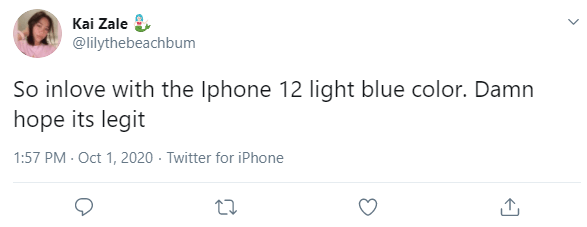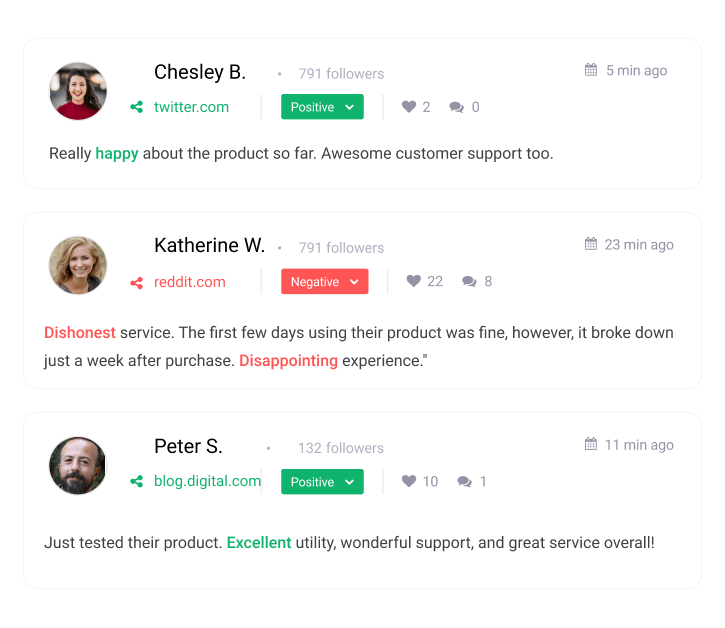What are AI Consumer Insights and How to Discover Them? Examples & Tools
Table of contents
Businesses of all kinds do everything in their power to satisfy consumers. They are constantly searching for new ways to improve their products or services. What makes achieving this goal a lot easier? Consumer insights. Discovering and drawing conclusions from them makes meeting customers’ expectations much more successful.

Are you wondering how to read your customers’ minds to satisfy them? You need to master discovering consumer insights. In this article, I will do my best to show you:
- What are consumer insights?
- Why do we need customer insights in marketing?
- Examples of great consumer insights
- How to discover consumer insights?
- Consumer insights tools
- Conclusions
Consumer Insights – Definition
Consumer insights reflect valuable information about your target audience – their characteristics, preferences, behaviors. They help you identify customers’ needs and better understand their pain points. So, you will learn more about your current and potential clients.
What can you do with those insights? With a deeper understanding of your clients, you will draw accurate conclusions. Then you will develop better products and services. For example, offer desired features and improve any inadequacies to satisfy your consumers and meet their needs.
To put it more simply – the more you know about your target audience (and the more you try to understand their motivations), the easier it is to create a solution that will be the answer to their issues.
The same goes for campaigns. The deeper you dig into your audience’s expectations, the easier it will be to create an advertisement that reaches them.
Brand24 is a tool that discovers customers’ insights. Give it a spin during a 14-day free trial!
Why are consumer insights important?
My experience tells me, Marketers need to keep up with consumer insights. Knowing how your customers feel, as far as your products or campaigns are concerned, is very beneficial.
Personally, it’s hard to imagine working in the marketing department without knowing the target group. I wouldn’t understand to whom I address my actions.
We need consumer insights because:
- They help to understand who customers are, what are their needs, pain points, and preferences. This information may come in handy while developing products.
- They give you information about customers buying behaviors – why they buy your products, how your solution makes their lives easier, as well as how and where they buy it. Such customer insight helps you draw customer journey maps. It will tell how to reach your clients in the future, or what kind of campaigns you should target them.
- They help you get to know your target audience in order to successfully communicate with them. It will allow you to build strong relationships with them, gain their trust, and customer loyalty.
- They help you out with market research and competitor analysis. Knowing people’s feedback, and keeping in mind every suggestion allows you to grow, and stay ahead of your rivals.
- They enable you to improve your customer service. Knowing your clients can help boost your communication with them, and most likely, provide them with better help. It will also allow you to improve customer satisfaction and experience.
Make sure to use consumer insights to great advantage!
Examples of great consumer insights
One of my favorite campaigns, that have been created based on great customer insights (please don’t judge me, I am a woman) is the one started by Dove in 2004.
What was the insight?
An indication that only 2% of women consider themselves beautiful.
What was the aim of the campaign?
To make women feel comfortable in the skin they are in, to create a world where beauty is a source of confidence and not anxiety.
The For Real Beauty campaign started already back in 2004 as a series of billboards and it turned out to be a huge success.

Next, as a result, the campaign expanded into a series of television spots and viral videos. One of the most known videos of the campaign is Real Beauty Sketches, as it came across incredibly positive reactions among the public (especially women) and media.
Let’s look at examples of consumer insights that I found online using the Brand24 tool. The following posts refer to popular companies. They could easily consider these opinions while developing their products or services. These kinds of suggestions are insights we are looking for!



As you can see, all of these tweets are posted by Uber Eats and Apple’s target audiences. They contain amazing insights, but it would be difficult for the clients to find these suggestions because the clients didn’t tag the brand.
That’s why I thought I would give you a couple of tips on discovering consumer insights.
How to discover consumer insights?
Customer insight strategy takes on different forms. Most of the techniques are based on market research and data analysis. You can do it through traditional ways such as surveys or by using a professional tool that monitors online mentions.
Before you start I advise you to:
- Describe what you want to discover. Before conducting research, make sure you know what kind of data you need.
- Identify your budget and team resources. You’ll need some time and money to obtain consumer insight.
- Think about how you will use customer insights and behavioral data. I believe you will discover some actionable insights. What you will do with them? Make a post-research plan.
Already know it? Great! You’re ready to choose the best collection method.
01 Surveys, Focus Groups & Observations
Here’s how surveys, focus groups and observations work:
What: Many businesses use these methods to learn about customer behavior, satisfaction, and opinions. They provide a way to ask questions of your target audience, which can lead to valuable information.
How:
Surveys & Interviews: Companies create questionnaires and conduct interviews to collect feedback from customers, helping them understand thoughts, feelings, perceptions, and opinions.
Observations: Businesses monitor customer interactions, either in-person or online, to better understand their behavior and preferences.
But there are some limitations:
Not a One-Size-Fits-All: Surveys and interviews might not be the best option for every brand, especially small businesses or those just starting out. They often lack the resources or budget needed for in-depth consumer research.
Hesitant Customers: Some customers may not feel comfortable sharing their thoughts and feedback directly with the brand, making alternative methods important for gathering insights.
The Internet to the Rescue: People often share their thoughts, opinions, feedback, and suggestions online, like on social media, blogs, forums, review sites, or podcasts.
Why: So, why should businesses consider these alternative methods?
Hidden Insights: Your target audience’s online posts and comments are treasure troves of insights.
Personal Connection: Analyzing and drawing conclusions from online interactions can be super effective, as it helps you get to know your customers on a more personal level, uncovering needs and pain points you might not have thought of before.
02 Media Monitoring Magic with Brand24
Discover how media monitoring tools assist businesses in understanding their customers more effectively:
Data Collection: Brand24 diligently searches the internet to identify public posts, comments, and discussions related to your brand. This way, you gain access to valuable information that would otherwise be challenging to find.
Data Analysis: Brand24 tracks and analyzes data in real-time, eliminating the need for time-consuming surveys or interviews. You can quickly review selected mentions displayed in the dashboard and begin interpreting the data.
Actionable Insights: By examining the compiled mentions, you can derive valuable conclusions about your customers’ opinions, suggestions, and feedback, ultimately helping you enhance your brand, products, and services.
Why: So, what makes Brand24 such an indispensable tool? Here are the key reasons why it’s a game-changer:
Happy Customers: By monitoring what customers say about your brand online, you can address their concerns and meet their needs more effectively. This results in satisfied customers who become loyal to your brand.
Improved Products & Services: Brand24’s insights enable you to refine your products and services continually, ensuring they meet customer expectations and remain competitive.
Real-time Analysis: Brand24 allows you to track and analyze data in real-time, making it easier to stay informed about what customers are saying about your brand at any given moment.
Cost & Time Savings: Brand24 streamlines the process of obtaining online opinions, suggestions, and feedback, making it a more cost-effective and efficient alternative to traditional market research methods.
Here’s what the mentions look like:

As you can see, mentions are marked as positive, negative, or neutral. It’s very beneficial when you want to improve your product or business in general. Negative mentions are signs where you should focus.
Check: Media Monitoring Step by Step: Setting Up a Project
Set up Brand24 and discover what customers say about your brand, products, and services!
Consumer insights tools
If you want to know what people think about a product, there are a few tools that can help. All in all, analysis is what actually brings them together. The main purpose of those tools is to help you understand your clients better.
As I mentioned, you can discover insights in many different ways. It can be done by social listening and analyzing what people are saying about your company online, checking sentiment analysis, creating surveys and feedback polls, analyzing your social media performance.
There are different tools that offer these kinds of features and make the process of discovering consumer insights easier:
- Brand24
- Remesh.ai
- Facebook Audience Insights
- Google Trends
- SurveyMonkey
- Google Forms
- Google Analytics
Some of these tools are free, offer a free trial, or are affordable to make discovering client insights accessible.
Consumer insights tools can help you understand what people think about your product. This information is essential to making informed decisions about the future of your business.
With this data, you can figure out how to improve your product and better serve your customers. You’ll be able to create a product that they actually want – not just one that you think they should want.
Consumer Insights in Market Research
Consumer insights play a vital role in market research, helping businesses to better understand their target audience and develop products or services that meet their needs. To discover valuable insights, businesses can use various methods such as surveys, focus groups, and observations. However, analyzing online conversations and feedback using media monitoring tools can provide a more cost-effective and efficient way to collect insights. Here are some practical tips for which will help you leverage customer insights in market research:
- Define the research goals and identify the target audience before collecting customer insights.
- Use a combination of methods to collect data, including surveys, interviews, observations, and media monitoring tools.
- Analyze the data to identify patterns and draw meaningful insights that can inform business decisions.
- Look for insights beyond just demographics, such as preferences, motivations, and pain points.
- Keep track of competitors and industry trends to stay ahead of the curve.
- Use insights to develop and refine marketing strategies, products, and services that resonate with the target audience.
Conclusions
Many companies face customer retention. They don’t know their clients. That’s a big mistake.
Thanks to conducting consumer and market research, brands can build a strong relationship with clients by serving relevant products, services, and solutions. That’s not everything. Insights can increase sales and improve the general marketing strategy. Furthermore, they are essential while designing a great customer experience and journey.
With proper consumer insights tool, you’ll be able to:
- Conduct the demographic and psychographic analytics of your target audience
- Measure their characteristics, age, gender, education level, ethnic background as well as preferences, habits, factors impacting their general or personality, lifestyle, and favorite social media platforms
- Discover what impact shopping decision
The analysis results will help you build a strategy, create a product based on clients’ needs, learn where to target your campaigns, how to communicate, and which social media can be effective for you.
As you can see, there are lots of benefits. So don’t wait and start your consumer research! Click here and check how Brand24 can discover customer insights for your brand!
FAQ
- What is an example of a consumer insight statement?
“Consumers today are increasingly seeking convenience in their shopping experience, with a preference for online shopping and home delivery. This is driven by the need to save time and simplify their lives.”
- What are consumer insight examples?
- Consumers are becoming more health-conscious and seeking natural and organic products.
- Millennials value experiences over material possessions.
- Busy parents are looking for quick and easy meal solutions.
- Consumers are willing to pay more for products that align with their personal values.
- Technology has made consumers more informed and empowered in their purchasing decisions.
- What are the components of consumer insight?
- A deep understanding of consumer needs, wants, and behaviors
- An analysis of market trends and competitors
- Identification of key drivers and motivations behind consumer behavior
- A focus on the emotional and psychological factors that influence consumer decision-making
- The ability to translate consumer insights into actionable strategies for product development, marketing, and communication.
- How do you analyze consumer insights?
- Collect and analyze data from a variety of sources, including surveys, focus groups, and social media.
- Look for patterns and trends in the data to identify key insights.
- Use qualitative and quantitative analysis techniques to gain a deeper understanding of consumer behavior and preferences.
- Develop consumer personas or profiles to help you better understand and empathize with your target audience.
- Use these insights to inform product development, marketing, and communication strategies that will resonate with your target audience.

